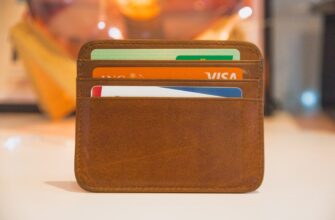- Why Anonymizing Your Ledger Matters More Than Ever
- Understanding Ledger Anonymization Fundamentals
- Pre-Tutorial Checklist: Safety Essentials
- Step-by-Step Safe Anonymization Process
- Step 1: Data Scoping & Sensitivity Analysis
- Step 2: Apply Anonymization Techniques
- Step 3: Validate Anonymization Integrity
- Step 4: Secure Storage & Access Control
- Critical Safety Best Practices
- Common Pitfalls That Compromise Anonymity
- FAQ: Your Ledger Anonymization Questions Answered
Why Anonymizing Your Ledger Matters More Than Ever
In today’s data-driven world, ledger anonymization is critical for protecting sensitive financial or transactional information from unauthorized access. Whether you’re managing blockchain transactions, accounting records, or personal financial logs, anonymizing your ledger removes personally identifiable information (PII) while preserving data utility. This tutorial provides a secure, foolproof method to anonymize ledgers without compromising data integrity—essential for compliance with regulations like GDPR and preventing identity theft.
Understanding Ledger Anonymization Fundamentals
Ledger anonymization involves altering datasets to prevent tracing back to individuals or entities. Unlike basic redaction, true anonymization uses techniques like:
- Data Masking: Replacing real values with fictional but structurally similar data
- Aggregation: Combining entries to hide individual transactions
- Pseudonymization: Swapping identifiers with reversible tokens (requires separate key storage)
- Differential Privacy: Adding statistical noise to obscure individual contributions
Safety is non-negotiable: Poorly anonymized ledgers risk re-identification attacks where hackers cross-reference data to expose identities.
Pre-Tutorial Checklist: Safety Essentials
Before starting, ensure you have:
- Encrypted Backup: Full ledger copy stored offline (e.g., VeraCrypt container)
- Audit Trail: Version control (Git) to track changes
- Secure Environment: Air-gapped computer or VM without internet access
- Tools: Python/R for scripting or dedicated tools like ARX Data Anonymization
Step-by-Step Safe Anonymization Process
Step 1: Data Scoping & Sensitivity Analysis
Identify PII fields (names, addresses, transaction IDs). Use tools like pandas-profiling in Python to detect hidden identifiers.
Step 2: Apply Anonymization Techniques
- Mask Direct Identifiers: Replace names/emails with hashes (SHA-256 with unique salt)
- Generalize Indirect Identifiers: Convert exact amounts to ranges ($100 → $90-$110)
- Introduce Noise: Add ±5% variance to numerical data using differential privacy libraries
Step 3: Validate Anonymization Integrity
Run re-identification risk tests:
- Linkability checks against public datasets
- k-Anonymity verification (ensure each entry blends with ≥k-1 others)
Step 4: Secure Storage & Access Control
Encrypt the anonymized ledger with AES-256. Implement role-based access (RBAC) limiting views to necessity-only principles.
Critical Safety Best Practices
- ❌ Never work on live data—always use copies
- ✅ Regularly update anonymization algorithms to counter new de-anonymization tactics
- ✅ Conduct quarterly penetration testing on anonymized datasets
- ✅ Use zero-knowledge proofs for ledger verification without exposing raw data
Common Pitfalls That Compromise Anonymity
- Insufficient Generalization: Overly specific age/date ranges enable triangulation
- Ignoring Metadata: Timestamps/logs can leak patterns—always anonymize them
- Key Management Failures: Storing pseudonymization keys with anonymized data
FAQ: Your Ledger Anonymization Questions Answered
Q: Can ledger anonymization be reversed?
A: Only if pseudonymization is used and decryption keys exist. True anonymization is irreversible.
Q: How often should I re-anonymize my ledger?
A: After every major data update or annually—whichever comes first. Stale data increases re-identification risks.
Q: Is Excel sufficient for small-scale anonymization?
A: No. Manual methods lack consistency and audit trails. Use script-based tools even for small datasets.
Q: Does anonymization affect ledger auditability?
A: Properly done, no. Maintain a separate, secured key-log for authorized audits while keeping production data anonymous.
Q: Are public blockchains truly anonymizable?
A: Yes, using techniques like CoinJoin or zk-SNARKs, but on-chain analysis requires continuous countermeasures.








